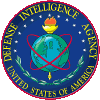

The Middle East has been the major market for North Korean arms, with Iran and Libya making most purchases. Sales to Iran peaked in the early 1980s at the height of the Iran-Iraq war. These sales probably constitute about 90 percent of North Korea's arms exports, making this relationship most valuable. Other Middle East clients probably include Egypt and Syria. Through Middle Eastern arms sales, North Korea gains hard currency, alternative oil sources, and access to restricted technology.
Precise figures on North Korea's arms trade, economy, and foreign trade balance are not available. Rough estimates indicate North Korea earned over $4 billion from 1981 through 1989. Arms sales during the peak year 1982 represented nearly 37 percent of North Korea's total exports.
Bargain-basement prices sometimes conceal commercial and political motives. For example, in April 1986, North Korea made a sizable sale of domestically manufactured rifles to Peru. Peru's government justified the purchase because the price was 75 to 80 percent below world market price. North Korean motives for the sale combined the desire to earn foreign exchange with improving relations and, in this case, increased visibility in Latin America.
The weapons North Korea exports include large quantities of munitions, small arms, artillery, multiple rocket launchers, tanks, armored personnel carriers, air defense artillery, SCUD-B short-range ballistic missiles, and some naval craft. North Korea also has served as a conduit for selected arms shipments from China, including those to Iran and possibly Iraq. These arrangements provided China with plausible denials of CSS-N-2/SILKWORM antishipping missile sales in 1987 and 1988. China claimed third parties beyond it's control provided Iran SILKWORMs. Arms from the Soviet Union also may have been channeled in the same manner.
Exporting Military and Economic Support
Although North Korean efforts to gain support in international forums such as the Nonaligned Nations have had
limited success, providing military training and advisers to Third World recipients plays a large role in North
Korea's foreign political and economic initiatives. Latin American or Sub-Saharan nations that normally do not
support either North or South Korean agendas sometimes temporarily support the North to obtain arms or
economic help. To such nations North Korea presents itself as a fellow revolutionary struggling with constraints
of relations with the superpowers. Small countries, hesitant to commit to a military relationship with one of the
superpowers, sometimes find North Korea small enough and far enough away that it does not pose a threat.
North Korean earnings from such ventures --- either in hard currency, offset agreements, or political chits to be
redeemed later --- apparently are worth the effort.
Beginning in 1981, Zimbabwe was North Korea's most ambitious effort. Building on a relationship developed with Robert Mugabe before he took power in 1980, North Korea equipped and trained the Army's 5th Brigade. North Korea provided equipment, including T-54 tanks, armored personnel carriers, trucks, artillery, air defense artillery, and about $18 million worth of small arms and ammunition. Training included political indoctrination and Korean-style martial arts.
However, deficiencies surfaced during efforts to use the 5th Brigade in counterinsurgent and border security duties. North Korea had problems with logistics, esprit de corps, and coordinating maneuvers of dispersed companies and platoons. By 1986, British military instructors replaced the North Koreans and solved the problems. By then much of the North Korean equipment was unusable because of poor maintenance and lack of spare parts.
Other recipients of North Korean military assistance include Madagascar, Tanzania, the Seychelles, and Uganda. In the early 1980s, North Korea loaned Madagascar MiG-17/FRESCOs and trained pilots for the MiG-21/FISHBEDs Madagascar had purchased from the Soviet Union. North Korea also gave the Navy four P-4 torpedo boats and constructed a small arms factory before concluding military assistance in 1984. At about the same time, Tanzania received a 77-man North Korean police team to provide personal security for the leadership. North Korea probably provided similar assistance to President Rene of the Seychelles. Between 1981 and 1985, Uganda received counterinsurgency aid until the National Resistance Army forced the North Koreans to flee.
North Korea also cooperated with the Warsaw Pact, particularly the Soviet Union, to defend embattled Marxist governments in Angola, Mozambique, and most recently Ethiopia. North Korea provided military advisers and some weapons. Although military assistance was relatively modest in both Angola and Mozambique, heavy involvement in Ethiopia was suspected. As the circle of hardline Marxist countries shrinks, North Korea will pursue solidarity with those remaining even more desperately.
